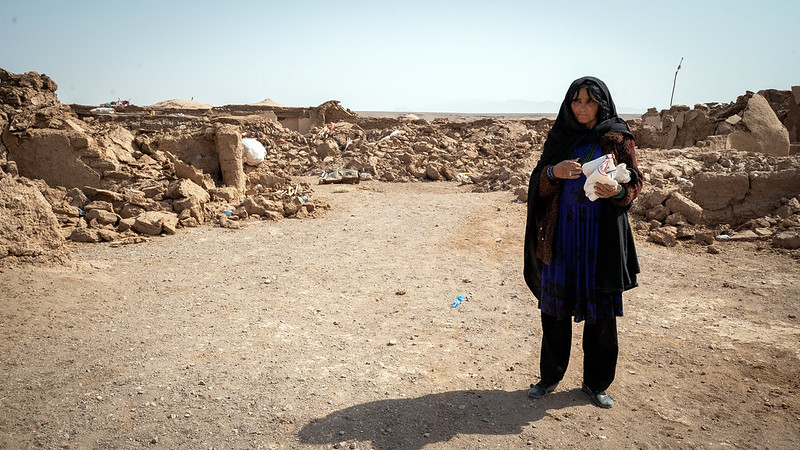
On October 7th, 2023, a devastating earthquake followed by three aftershocks struck the Herat province in the Western region of Afghanistan. At least 1,482 individuals lost their lives, making this natural catastrophe one of the deadliest to strike the territory in the last twenty years. Close to the Iranian border, the earthquake injured 2,100 people. Over 114,000 individuals are now in urgent need of humanitarian assistance.
The Taliban regime has put out conflicting numbers on the death toll. The disaster management ministry revised the death toll to around 1,500 people when an earlier figure indicated the death of 2,400 victims. The ambiguous death tolls are part of a broader issue, as non-governmental actors from abroad already struggle to establish dialog and cooperation with local authorities. As global attention is fixed elsewhere, the consequences of the quake on Afghan civilians threaten to escalate an already growing humanitarian crisis.
The high seismic hazard in Afghanistan
According to the US Geological Survey, the main shock registered a magnitude of 6.3 points on the Richter scale, originating from a depth of 14 kilometers beneath the surface of the Earth. An aftershock of equal magnitude, which followed the main shock by thirty minutes, rocked the already devastated province.
The catastrophe occurred in a zone with one of the highest seismicity worldwide. Afghanistan is located in the Hindu Kush mountain range, formed by the collision of the Indian and Eurasian plates. Their collision causes slips on major faults that often provoke strong earthquakes in Afghanistan and its neighboring countries.
A ‘crisis on top of a crisis’
Despite the important seismic hazard of their territory, Afghan rural communities are not prepared to face environmental shocks. The quake spread its terror across the Herat province, leaving a trail of destruction in its wake. Available satellite imagery indicated that 513 villages had been impacted and 3,330 houses destroyed. Fragile infrastructures in the poorest regions of Afghanistan offer little resistance when the Earth shakes. Habitations are made of mud bricks and cannot protect populations from the seismic threat. In the Zindajan district of Herat, the epicenter of the quake, “100% of homes were totally destroyed”, according to the UN Office for the Coordination of Humanitarian Affairs (OHCA). This widespread devastation constrained the victims to find temporary shelters in tents or open areas.
“This is a crisis on top of a crisis”, stressed Arshad Malik, director for Save the Children in Afghanistan. Before the grievous disaster, the nation was already grappling with decades of war, drought, displacement, and poverty. Malnutrition is of particular concern in the country, ranked 109th of 121 nations by the 2022 Global Hunger Index. Harsh climatic conditions exacerbate the ongoing food crisis – 30 out of 34 provinces were reported as delivering low water quality by the World Food Program. The deprived population was undoubtedly unprepared to cope with the earthquake’s magnitude. A robust humanitarian aid response is vital.
Kabul and the absent international arena
However, attention has been shifting away from Afghanistan in the last two years. Since August 15th, 2021, trust and partnerships between Western governments and the local regime have eroded. As the Taliban seized Kabul, the country faced a large-scale exodus of healthcare professionals. The regime has suffered the consequences of this significant brain drain, which has hampered itd ability to address the humanitarian crisis unfolding and cope with the ongoing aftermath of the earthquake.
Nevertheless, the Taliban’s rule remains officially unrecognized by any country, and international NGOs have fled the country since their return to power in 2021. Moreover, since the restoration of the 1996 regime, global donors have been reluctant to provide direct aid to Afghanistan. Even before the earthquake, the humanitarian aid system in the country was already critically underfunded, with over 29 million Afghans in urgent need of assistance. An analysis of the U.S. Institute of Peace uncovers the struggle of the international arena to find a balance between supplying emergency assistance and exerting pressure on Kabul to moderate its rigid policies. Therefore, despite the scale of the tragedy, international sanctions imposed on the Taliban compromise the delivery of sufficient aid to the population in Herat province.
Thus, a rebuilding program is urgently needed to provide proper shelter, food, and medical aid to survivors. As WHO and the Health Cluster partnered to find urgent responses, an appeal for 7.9 million USD was launched to ensure affected Afghans received the care needed in the next six months.
Edited by Margaux Zani
The opinions expressed in this article are solely those of the author and they do not reflect the position of the McGill Journal of Political Studies or the Political Science Students’ Association.
Featured image by UNDP Afghanistan.